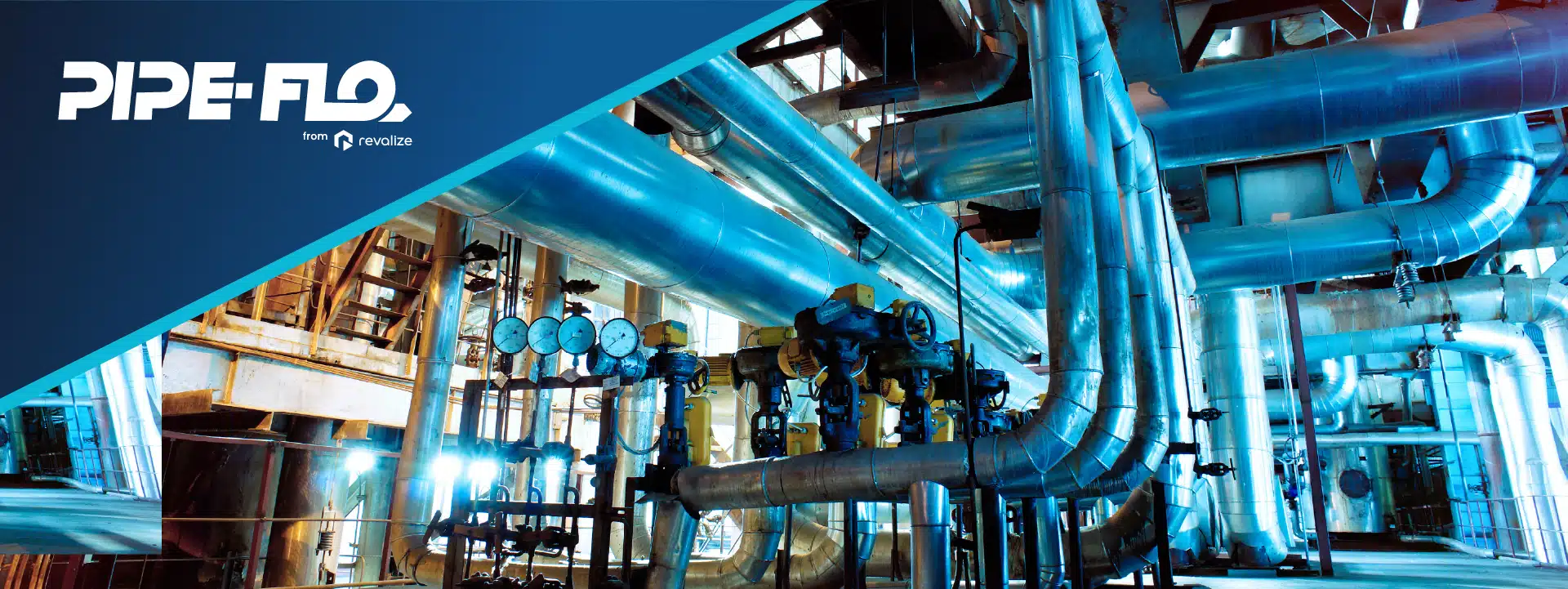Modern data centers are more complex, more dynamic, and more mission-critical than ever. From hyperscale campuses to edge sites, fluid systems—especially chilled water and liquid cooling loops—are mission-critical to uptime and thermal performance.
Static drawings or isolated spreadsheets don’t capture how a system behaves under real-world operating conditions. However, by building an engineering-grade digital model, teams can simulate flow behavior, validate equipment performance, and align design with operations all before installation begins.
That’s where PIPE-FLOÒ comes in. PIPE-FLO is the engineering standard in fluid flow modeling and simulation, giving teams a validated model that mirrors system behavior and ensures cooling targets are hit from the first watt to full load.
Data center cooling systems evolve across multiple stages, from early planning to long-term operations. PIPE-FLO is built to support each phase with a fluid modeling platform that connects stakeholders and drives better decisions. Here’s how the six pillars of performance come together.
Early-phase designs move fast. Structural teams need placeholder equipment specs to validate layouts and load paths, often before final selections are made.
PIPE-FLO allows rapid sizing of pumps, pipes, and components based on realistic flow and pressure estimates. One global EPC firm began modeling a single data hall using PIPE-FLO, then scaled the same model across 18 halls. That initial design became the reference to aligning owners, structural consultants, and design teams from day one.
In greenfield builds, decisions made at the white space planning stage ripple downstream into gray space capacity, infrastructure sizing, and long-term cooling strategy. PIPE-FLO helps bridge that gap early by allowing teams to test system behavior even before detailed architectural or rack layouts are finalized.
Once planning becomes design intent, precision matters. Engineers must size and select components that will meet flow demands and integrate into a larger system.
PIPE-FLO delivers precision-driven modeling across the entire lifecycle. It enables full-network modeling to validate pressure drops, pump curves, NPSH margins, valve logic, and heat exchange performance, all within a single, dynamic system model. The solution equips MEP teams to size pumps, valves and CDUs before concrete is poured, eliminating spreadsheet-based commissioning delays that routinely push go-live dates and inflate budgets.
It also includes integrated OEM pump catalogs and a library of over 6,000 verified fluids including ASHRAE-compliant glycol blends used in liquid cooling. That means tighter specs, and fewer surprises in the field.
System commissioning is where design meets reality. Balancing flows, achieving setpoints, and flushing or purging loops can all become major bottlenecks without a clear operational roadmap.
PIPE-FLO’s simulation tools reduce commissioning delays and ensure smoother transitions from design to operation. It also supports data center cooling system balancing by allowing teams to simulate balanced conditions, generate flushing plans, and validate flow paths before field startup. That means smoother handoffs, fewer delays, and faster time to go-live.
Once the system is live, every kilowatt counts. PIPE‑FLO models the system to right‑size pumps, pipes, and valves which eliminate excess safety‑factor stacking that inflates energy use and capital cost.
True optimization requires visibility into both component-level behavior and system-wide dynamics, from pump curves and valve positions to how the entire loop responds under load. In one case, a team cut pump energy use in half by adding a single component. No equipment changes, just a better understanding of system behavior.
PIPE-FLO OverTime module extends this insight further, enabling teams to simulate time-based thermal behavior during load fluctuations or failure events to help prevent costly surprises under variable conditions.
When cooling systems account for up to 40% of a data center’s total energy use, clarity is one of the most powerful tools for reducing OpEx and environmental impact.i
When issues arise like hot spots, low flow, or pressure alarms, teams need a fast and accurate way to understand what’s really happening in the system.
PIPE-FLO provides a dynamic digital twin to pinpoint issues and simulate fixes, turning troubleshooting into a proactive, low-risk process. Whether it’s a valve setting, pump fault, or incorrect balancing, engineers can diagnose and troubleshoot before disrupting operations.
In one mission-critical facility, cooling performance dropped after a system upgrade, despite sufficient chiller capacity. Using PIPE-FLO, the team learned that a poorly placed control valve was creating a pressure imbalance and short-circuiting flow away from hot zones. By adjusting valve logic, the team restored balance, improved thermal distribution, and avoided costly downtime without hardware changes.
Today’s data centers are rarely static. Adding IT load, increasing cooling capacity, or switching from air to liquid cooling demands major system updates.
PIPE-FLO helps model these changes before committing resources. You can simulate performance impacts, test design options, and plan infrastructure upgrades within the context of the existing system model.
That’s the power of a connected fluid model: complete lifecycle management, from initial design to retrofits, giving teams clarity, control, and confidence at every stage.
From initial design to system retrofits, design engineers need more than estimates—they need clarity. PIPE-FLO delivers a dynamic, engineering-grade model that mirrors real-world behavior, helping you validate specs, troubleshoot issues, and optimize performance with confidence. Whether you’re sizing pumps or simulating thermal load shifts, PIPE-FLO equips you to make data-driven decisions that reduce risk and improve outcomes.
